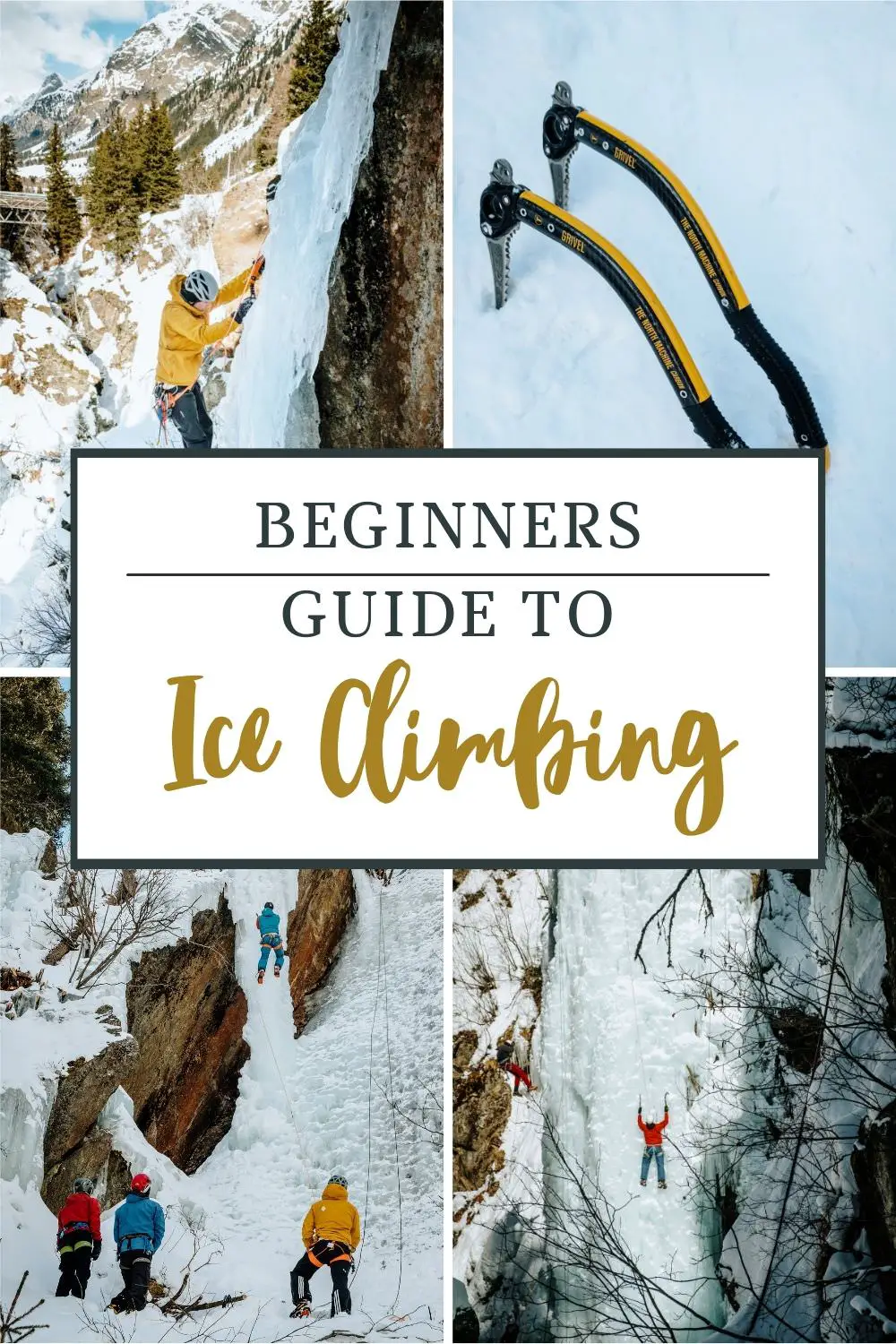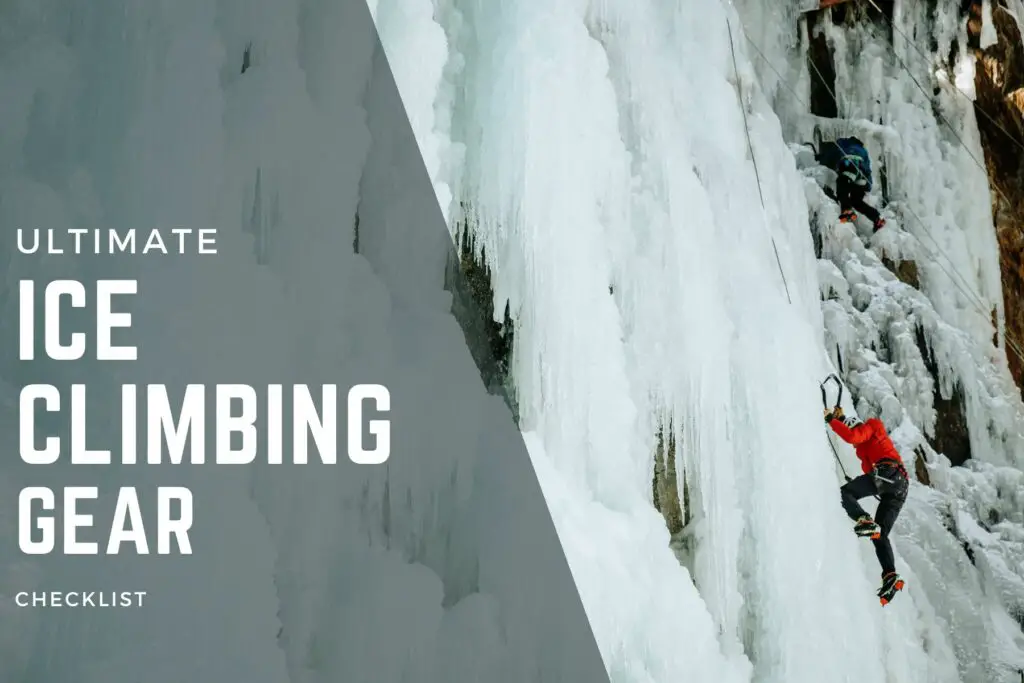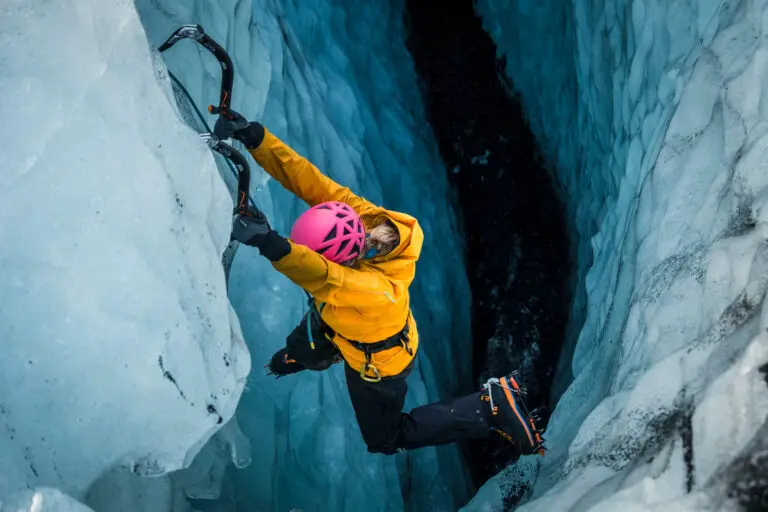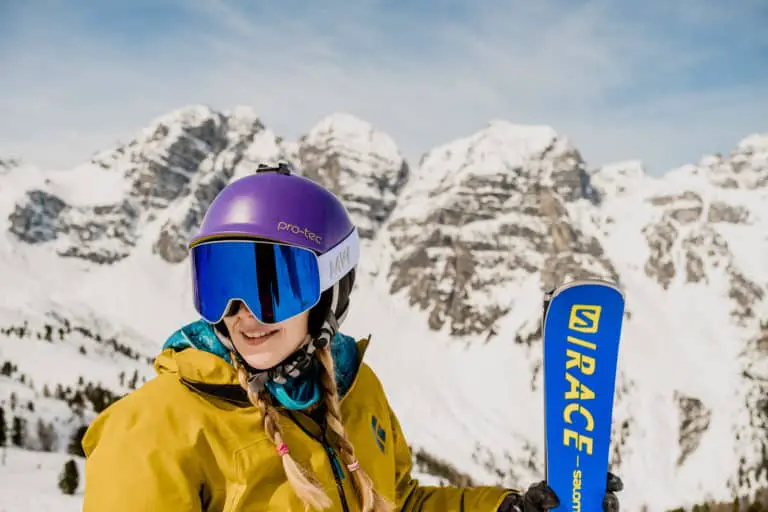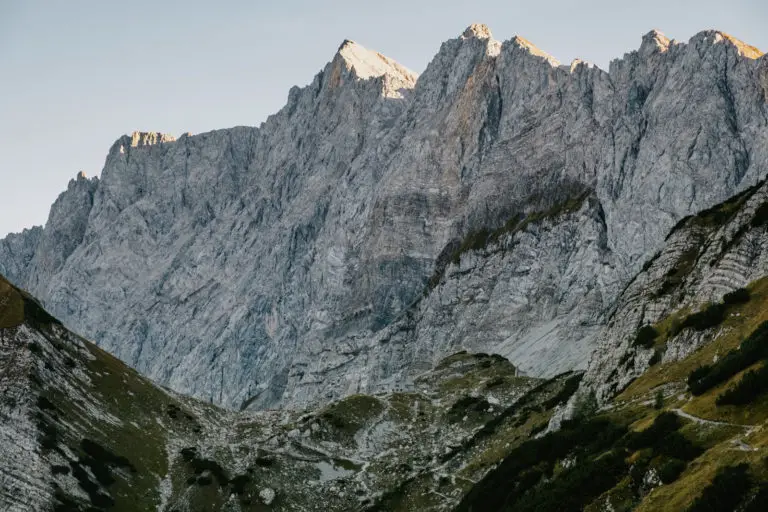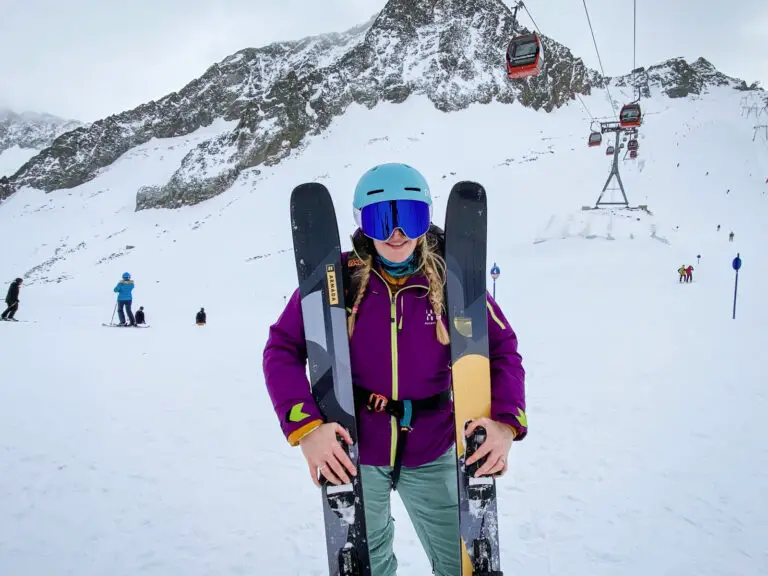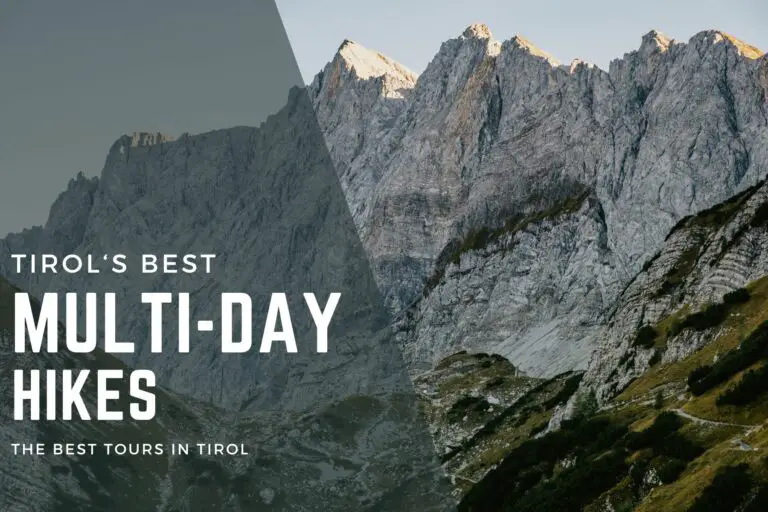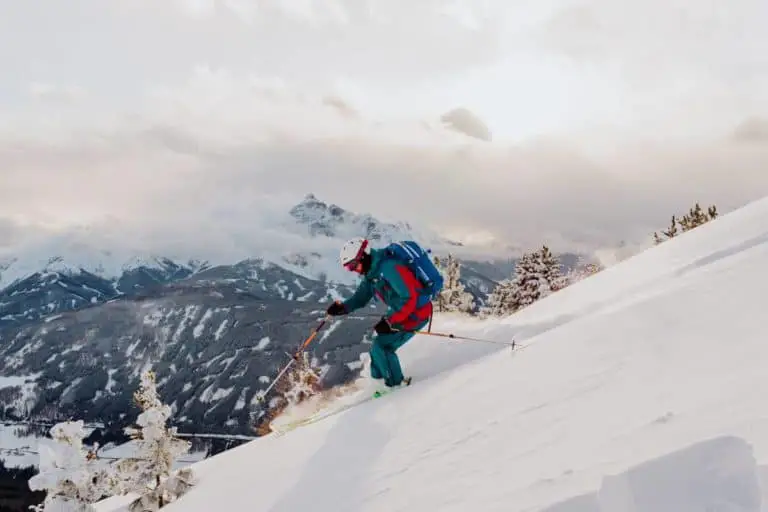Ice Climbing for Beginners – My First Day on Ice
Disclaimer: The information on this blog is for informational purposes only. These outdoor activities involve inherent risks, and conditions may change. I am not responsible for any injuries, losses, or damages resulting from the use of this information. Undertaking these activities without proper experience, equipment, or a qualified guide can be dangerous. Always assess your skill level, check local conditions, and proceed at your own risk.
Disclosure: This post may contain affiliate links, meaning I earn a small commission if you decide to make a purchase though my links, at no additional cost to you, which I’ll probably spend on more outdoor gear and travel to cool places.
Table of Contents
I’ve been a climber for a few years now, but my climbing is pretty much limited to climbing in the summertime. Last winter as a surprise for Menno, I decided to take him on an ice climbing course for beginners to see if we also enjoyed this totally different form of climbing. And *spoiler alert* – we did!
Getting started with ice climbing isn’t as easy as learning to boulder or sport climb, where indoor gyms around the world provide a safe, easy and welcoming space to give it a go. Ice climbing requires specific winter conditions, some special outdoor equipment, and a knowledgeable instructor since the dangers of ice climbing are arguably higher than with most other forms of climbing. The barrier to entry is much higher, but you shouldn’t let that stop you.
Whether you’re a complete beginner, or an experienced climber looking for a new type of adventure, here’s how you can give ice climbing a try this year.
In this post I’ll cover:
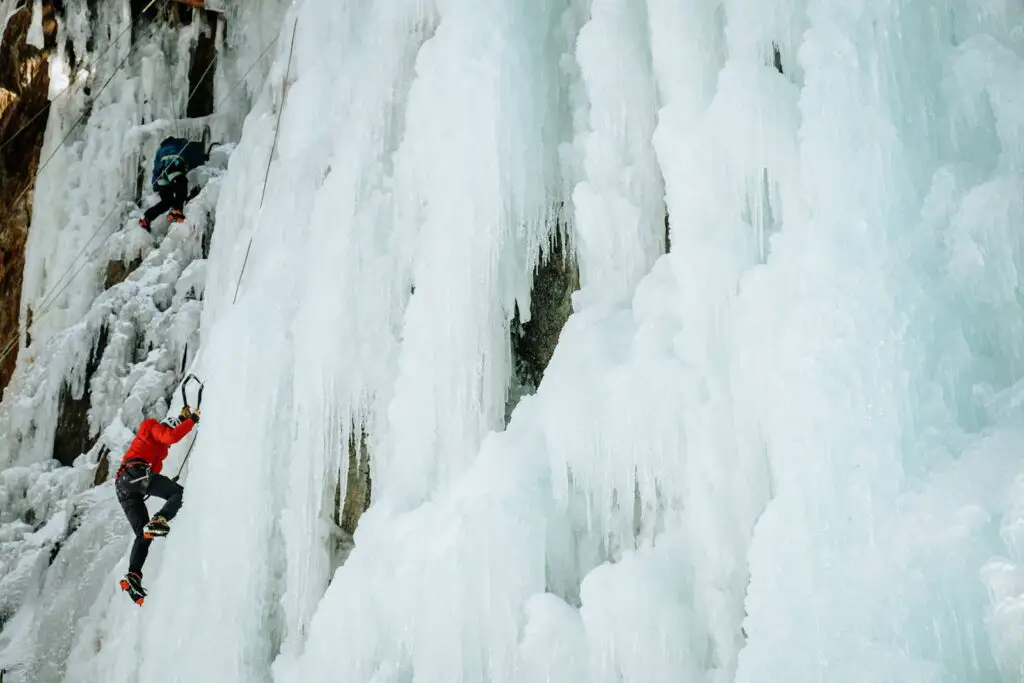
What Is Ice Climbing?
Ice climbing falls is an extreme form of climbing, but is also often found in high-alpine mountaineering. It involves ascending ice formations, such as frozen waterfalls or ice cliffs. While it does share some similarities with traditional climbing, it also requires many new skills.
Ice climbing requires the use of special equipment, such as ice axes, ice screws and crampons, as well as standard climbing equipment such as ropes and a belay device.
Although ice climbing can be more dangerous than other forms of climbing, with the right guidance, it can also be a fun and rewarding experience that allows climbers to explore some of the most In inaccessible and beautiful places on earth.
For many climbers, the challenge of ice climbing is not simply about getting to the top of the climb, but about pushing their limits in an environment that is both mentally and physically demanding.
How To Get Started With Ice Climbing
Getting started with ice climbing can be really daunting. Because it requires so much more specialist knowledge and equipment than regular climbing, it’s not so easy to simply decide to “give it a go”.
But thankfully the popularity of the sport is increasing, and there are a number of ways that you can try it out as a beginner.
Find A Taster Session or Beginner Course
This is exactly what we did. We found a local guiding company who were offering half-day, small group “Ice climbing taster sessions”.
For our beginner course, the guides told us what to wear in advance, and on the day they provided all of the specialist gear that we needed. We split into smaller groups, with two mountain guides watching over four students. The guides helped us fit our crampons, and took us down to the ice where they had already set up some top ropes for climbing.
At the start, they did a demonstration, but since all of our group had either tried ice climbing before or were climbers and knew how to belay, they let watched on as we took turns to climb the easy routes they had set up, giving us tips and advice to help us improve throughout.
The four-hour experience absolutely flew by, and we left with a determination to try ice climbing again.
While we only took a half-day taster course, there are some adventure guiding companies that offer full-day and multi-day courses, that can take you from a total beginner to an independent, novice climber.
For a really short introduction, Stubai Glacier has 1-hour taster sessions on Friday afternoons during the winter season, where you have the opportunity to try climbing their ice tower under the supervision of a local mountain guide.
To find a course in your location, I recommend reaching out to local mountain guides directly, however, in my experience, some guides aren’t so great at responding to messages. Alternatively, you may be able to book a taster session through an experience company like Jochen Schweizer.

Visit An Ice-Climbing Festival
Yes, there really are such things as ice climbing festivals! As the sport grows and becomes more popular than ever before, so do the events that surround it.
Not only are there ice-climbing competitions that you can go and watch, but there are many festivals all around the world that include clinics where anyone can give it a try under the supervision of experts.
For those folks who already have some ice climbing experience, festivals are a great way to test out all the latest gear and to improve your skills, as most offer workshops focusing on different techniques for all levels of climbers.
Some of the biggest ice climbing festivals around the world include:
- Eis Total Ice Climbing Festival in Pitztal, Austria
- Bozeman Ice Climbing Festival in Montana, USA
- Arctic Ice Festival in Norway
Go To An Indoor Ice Wall
Just like you can visit indoor ski halls with artificial snow, there are also a small number of indoor ice climbing walls or climbing walls specifically for dry tooling out there that allow you to try ice climbing for the first time in a safe and controlled environment.
- Ice Factory – Kinlochleven, Scotland
- The Ice Coop – Boulder, Colorado, USA (Dry tooling)
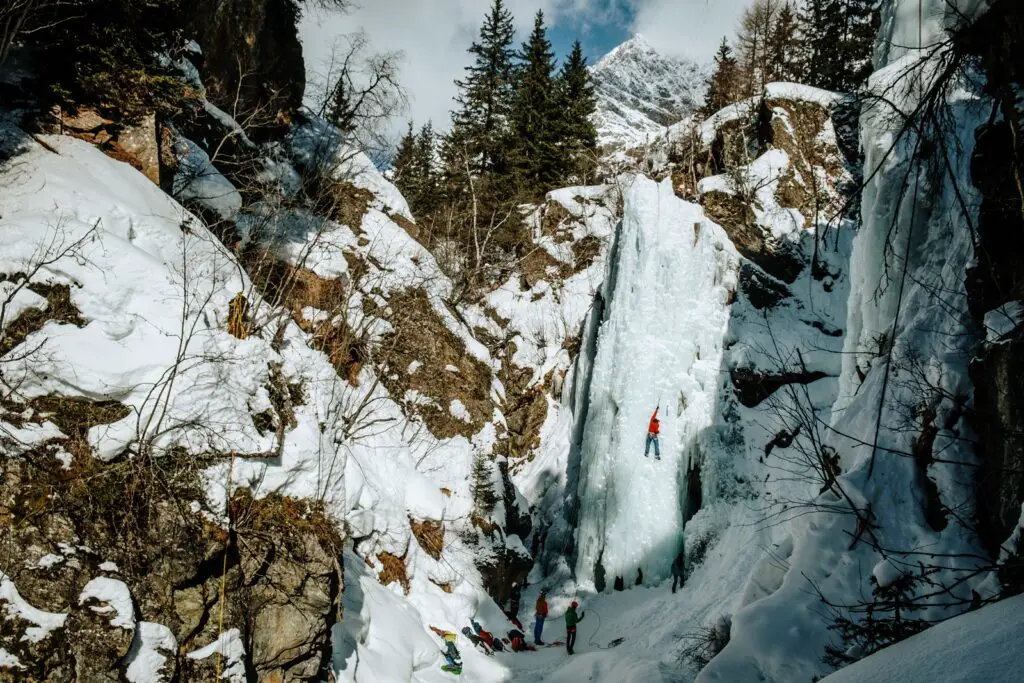
What Equipment Do You Need For Ice Climbing?
When you first get into ice climbing, it can be quite daunting when you see what gear you need – and how much all of that gear costs. The good news is that for most people, their first experiences climbing ice are on a course, where most of the gear will be supplied for you.
Below, I’ve broken down the main pieces of gear that you’ll be using when you start ice climbing, and also what to wear for your first days on the ice.
For a complete list of ice climbing gear, check out my Ultimate Ice Climbing Gear Guide
Ice Climbing Equipment
- Climbing Harness
When you are just starting, you can wear a standard rock climbing harness if you own one. If you don’t, your guide can usually lend you one. - Climbing Rope
As a beginner, you won’t be expected to bring a rope, as your guide will bring it. For ice climbing as a beginner, you’ll be climbing short single pitches on a top rope. The ropes you’ll be using are usually dry-treated single ropes, anywhere between 9-10mm in diameter, and 50-70m in length. - Climbing Helmet
As with a harness, if you already own a climbing-specific helmet, you can wear it for ice climbing. Otherwise, ask your guide if they can lend you one. - Ice Tools
Ice axes used for ice climbing are different from those used for mountaineering. Guides usually have a handful of extra sets of ice tools to use when you start ice climbing on a course. If you are trying ice climbing for the first time at a festival, you can usually try a number of different ones from the sponsors, to get a feel for what you like. - Belay Device
If you’re a sport climber, you might be used to belaying with a Gri-gri. While it is technically possible to belay ice climbing with one, it’s not recommended, as the ice on the ropes can prevent the device from working correctly. Instead, you’ll be using tuber-style devices (such as an ATC or Reverso). If you already own one, you can bring it to your first ice-climbing session. If you don’t, don’t worry. Your guide will have one. - Crampons
It is possible to ice climb in mountaineering crampons, but not recommended for extended use, as you’ll quickly damage your front points. If you are trying ice climbing for the first time, your guide will usually prove the crampons. - Crampon-compatible Mountaineering Boots
For ice climbing, you’ll want mountaineering boots that are crampon compatible (i.e. have a little ridge on the back for the crampon clip). If you don’t, speak to your guide about what boots you have. They may have crampons that can be attached to any boot or some boots you can hire from them. - Ice screws
When you start ice climbing, you will be climbing on a top rope, so you won’t start using ice screws right away. Your first time using ice screws will probably be practicing placing them on a top rope, or anchor building practice around the base.
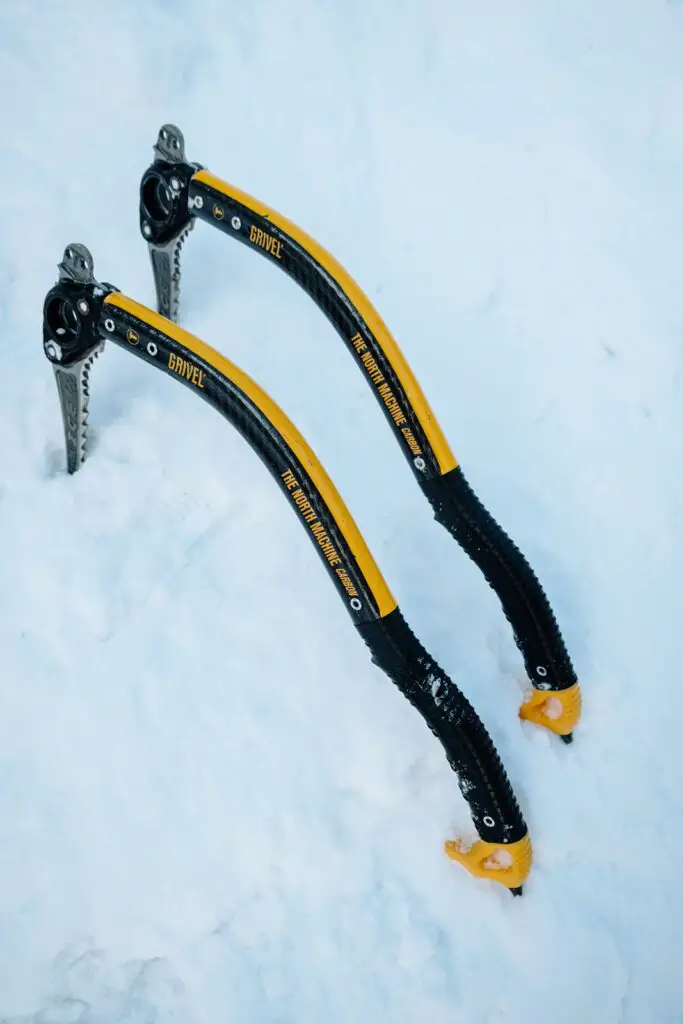
What Should You Wear For Ice Climbing?
For ice climbing what you wear is very important, as spending the day in the snow and ice, it’s easy to get cold and wet fast if you aren’t dressed correctly.
Just like with skiing and winter mountaineering, I usually dress for ice climbing using the layering principle – dressing in multiple layers where I can add or remove a layer as needed. For me, I get quite warm when I’m climbing, but cool down very fast when I’m belaying.
If you are taking part in a course, your guides will usually give you an indication of what to wear, but here’s a summary:
- Base Layers
My preference is lightweight base layers made of merino wool. I recommend long thermal pants and a long-sleeved thin top. - Warm Socks
Socks should be thick and warm, but tightly fitting so you don’t get blisters. Winter hiking or ski socks are ideal. - Mid-Layer
A fleece or Windstopper (or both of you get cold easily) layer over your baselayers and under your outer shell. - Waterproof Jacket
A waterproof hiking or mountaineering jacket that allows you to easily move and swing your arms above your head. A ski jacket is also ok when you are just starting out. - Down or Primaloft Jacket
I always wear a puffy insulated jacket, because I get cold fast. - Water-Resistant Pants
Mountaineering pants are ideal for ice climbing. If you don’t own mountaineering pants, you can also wear your ski pants for your first ice-climbing experience. They should allow you full range of movement and shouldn’t be too long or too wide at the bottom. - Multiple pairs of gloves, some thicker, some thinner. When you are climbing, your hands can get quite warm (although they can get wet), so for climbing, a thin pair of gloves is ok. For belaying and for in-between climbs, you’ll want warmer gloves.
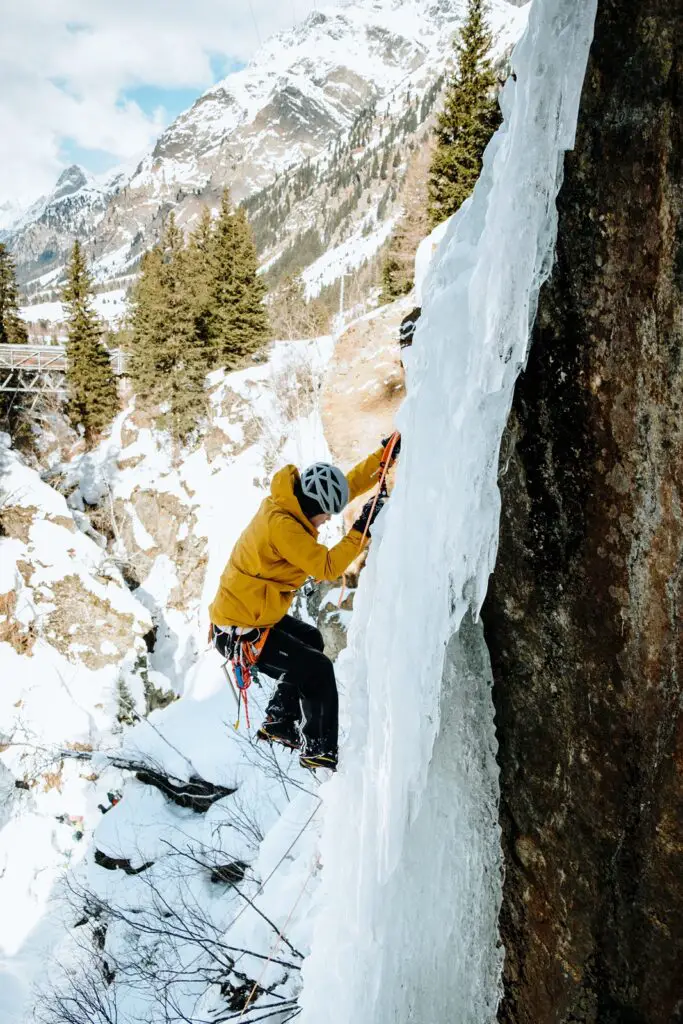
FAQ
Do You Need To Know How To Climb To Go Ice Climbing?
No, you can try ice climbing even if you’ve never been climbing before. The main benefits of already knowing how to climb come from already knowing how to belay, having more trust in the rope, and being less afraid to fall (especially on a top rope).
Is Ice Climbing Dangerous?
It can be if you don‘t know what you‘re doing. Ice is a natural and changeable surface that can be affected by a number of variables. Going ice climbing with professional instructors or certified mountain guides reduces the risk of accidents.
Do You Need to Train For Ice Climbing?
For your first time trying ice climbing, you don’t really need to train any particular skills. If you’re already a climber, you’ll find that it’s very different skills and body movements involved to rock climbing. You should, however, have a good level of physical fitness for ice climbing, even as a beginner, as it’s a physically demanding sport.
Summary
Ice climbing can be a pretty daunting sport for beginners. But renting the gear and taking a course or hiring a mountain guide is a great way to get an introduction to this exciting winter sport without having to go it alone.
Related Reading
Beginners Guide to Via Ferrata
Sport Climbing in Malta
Best Adventure Travel Destinations


